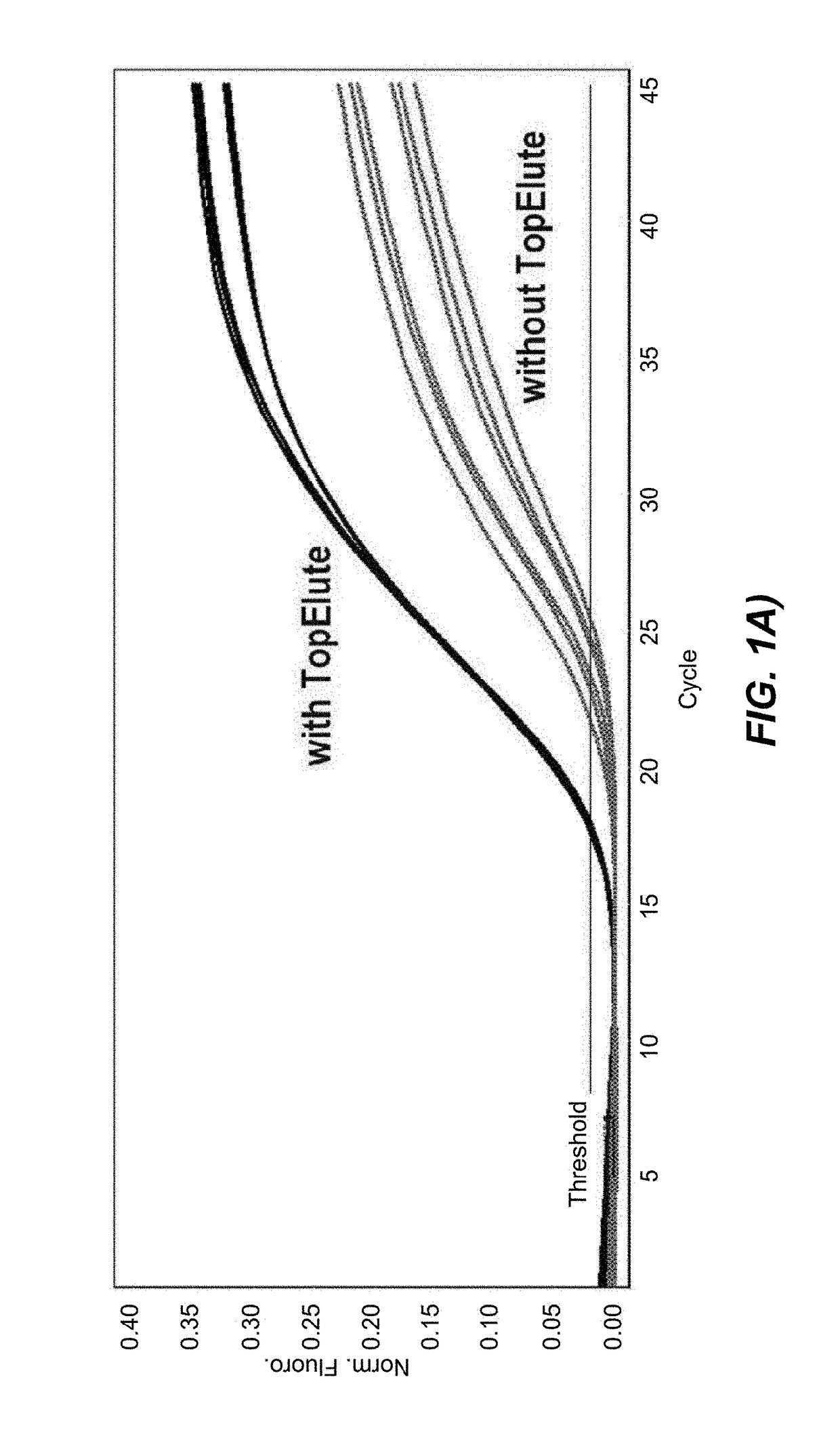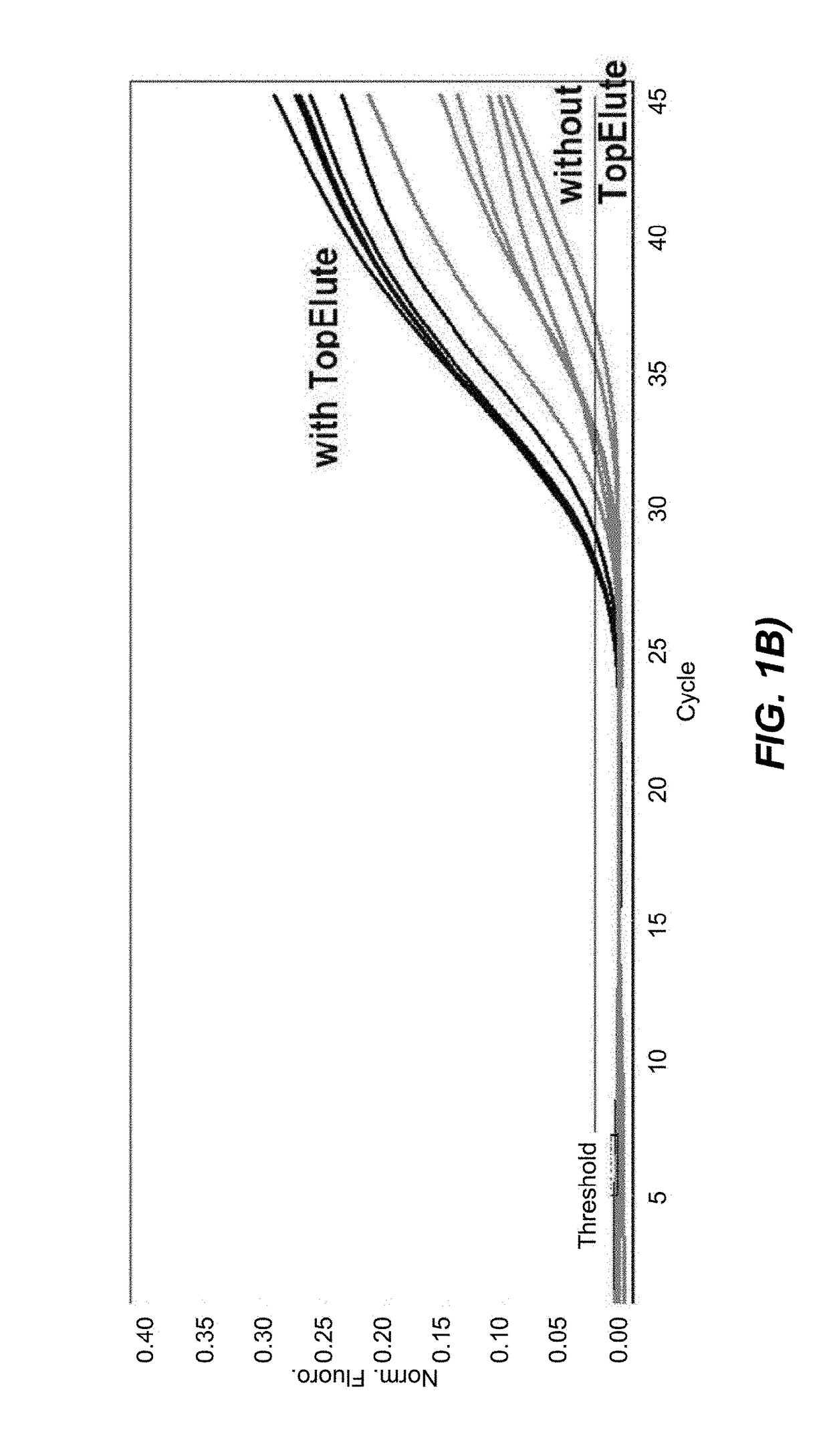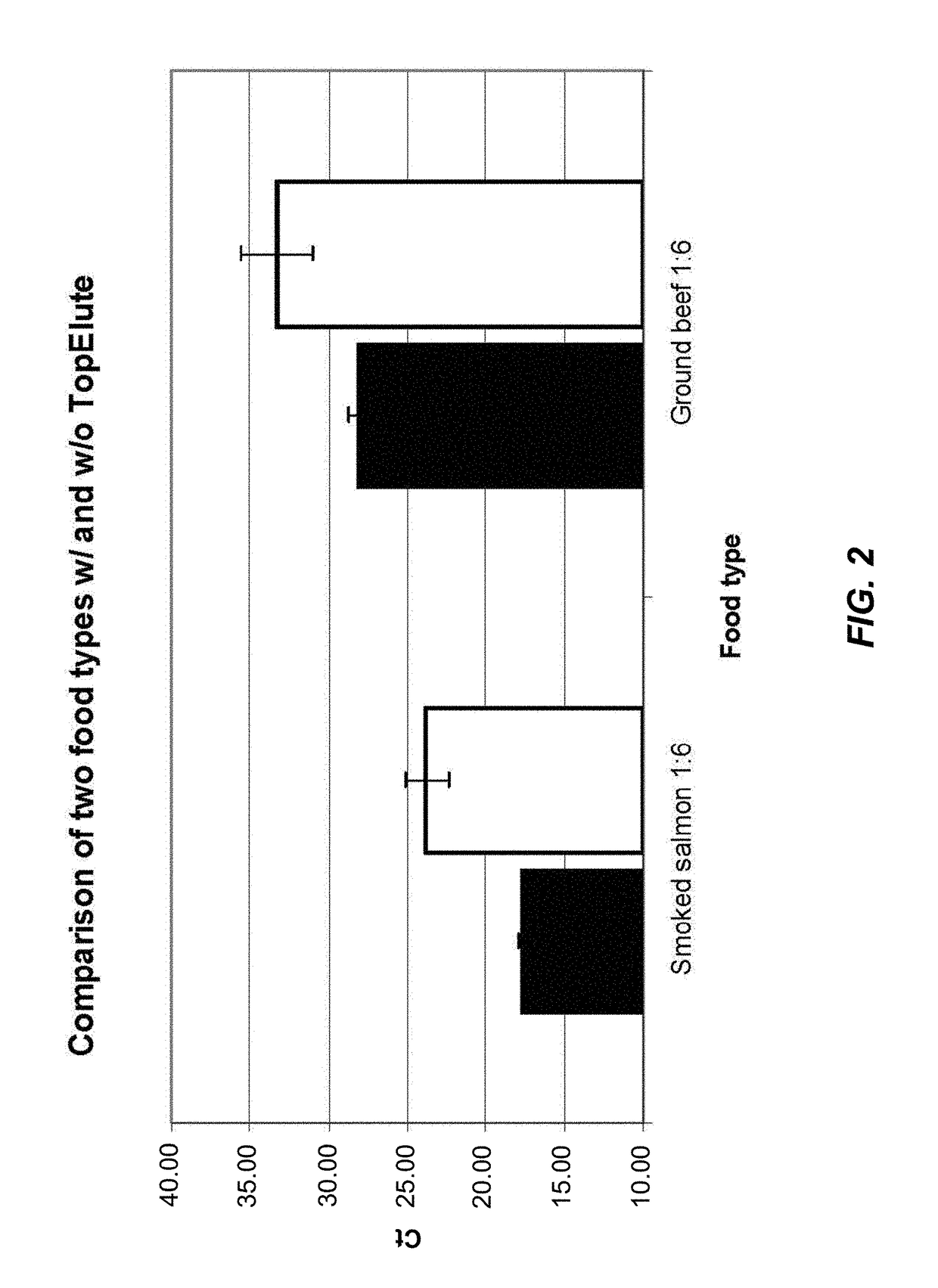Method for isolating nucleic acids from a food sample
a nucleic acid and food sample technology, applied in the field of isolating nucleic acids, can solve the problems of inability to integrate time-consuming methods in the regular flow of the food supply chain, the difficulty of controlling the safety of the supply chain, and the inability to control the supply chain. the effect of safety control
- Summary
- Abstract
- Description
- Claims
- Application Information
AI Technical Summary
Benefits of technology
Problems solved by technology
Method used
Image
Examples
example 1
2. Example 1
[0122]The first set of data was obtained with Protocol (1), in which the bacteria lysis is chemically unaided and based entirely on a thermal treatment at 89° C. To directly assess the influence of the TopElute treatment an analogous protocol, featuring the same process steps but lacking the TopElute overlay, was programmed and both protocols were tested in parallel.
[0123]To test the inhibitor removal capacity of the TopElute pre-purification step, enrichment cultures of two strongly inhibitory matrices were prepared. For a first culture smoked salmon and for a second culture ground beef was mixed with the enrichment medium Buffered Peptone Water and inoculated with ˜20 cfu of Salmonella enterica. Although the LFGB § 64 recommends a 1:10 ratio of food to medium (25 g of food and 225 ml of enrichment medium) a 1:6 ratio of food to medium (25 g of food and 125 ml of enrichment medium) was chosen to test the protocols. This ratio results in a higher background load of food ...
example 2
3. Example 2
[0128]The second set of data was obtained with Protocol (2) in which the bacteria lysis is chemically aided by the presence of the chaotropic binding buffer during the heat treatment at 89° C. Again, to directly assess the influence of the TopElute treatment under these modified lysis conditions an analogous protocol, featuring the same process steps but lacking the TopElute overlay, was programmed on the QIAsymphony and both protocols were tested in parallel.
[0129]For a better overview of the protocol steps the table provided below shows Protocol (1) as well as the comparative example.
[0130]
Protocol 2 (with chaotropic binding buffer in the thermal lysis)StepDescriptionSpecification1Transfer of the unprocessed food enrichment sample 400 μlfrom the primary tube into the reaction vessel2Oil overlay of the sample in the reaction vessel170 μlN.B: This oil overlay step was omitted in thecomparative example)3Addition of the binding buffer to reaction solution480 μl4Heating of ...
PUM
| Property | Measurement | Unit |
|---|---|---|
| particle size | aaaaa | aaaaa |
| particle size | aaaaa | aaaaa |
| particle size | aaaaa | aaaaa |
Abstract
Description
Claims
Application Information
 Login to View More
Login to View More - R&D
- Intellectual Property
- Life Sciences
- Materials
- Tech Scout
- Unparalleled Data Quality
- Higher Quality Content
- 60% Fewer Hallucinations
Browse by: Latest US Patents, China's latest patents, Technical Efficacy Thesaurus, Application Domain, Technology Topic, Popular Technical Reports.
© 2025 PatSnap. All rights reserved.Legal|Privacy policy|Modern Slavery Act Transparency Statement|Sitemap|About US| Contact US: help@patsnap.com



